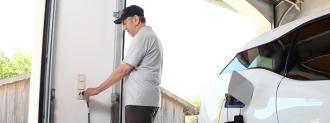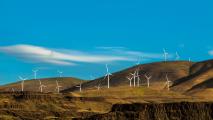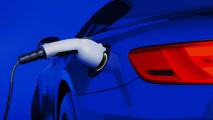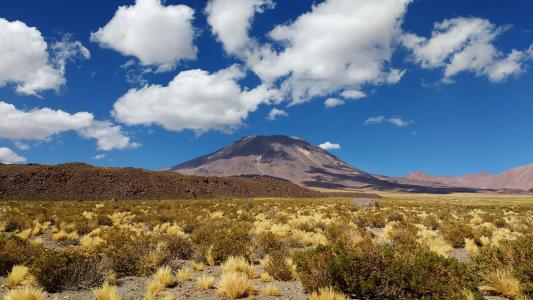Electric cars could help to power millions of households in the coming years, simply by harnessing their battery power. The electricity in the vehicle’s battery could be plugged back into the grid, instead of being stored. The technique was pioneered in Japan and our research will help understand how best to use it in the UK.
Many electric vehicles (EVs) are being produced with the ability to use their onboard battery to send power back to the electricity supply they are connected to. Whether that is the owner’s house, or the electricity grid more generally, these technologies have been led by governments and electric car manufacturers mainly in order to balance the demand on the power transmission network, or grid.
By 2030, the UK could have almost 11 million electric vehicles on the road — if 50% of these vehicles are able to feed unused energy back into the grid, this would open up opportunities to power 5.5 million households.
The ability to use these huge connected batteries complies with the future management and provision of cleaner grids – instead of burning fossil fuels to generate electricity, we should harness clean renewable sources such as wind and solar when abundant, and store the electricity in batteries for when not. So by charging electrical vehicles from renewable sources, we can lower our greenhouse emissions.
The plan sounds great, but is made tricky because electricity is difficult to store. But we already store huge amounts of electricity – in our cars. With around 1% of the UK’s 27 million households currently owning an EV, each with an average 60kWh battery, these 300,000 EVs could store an incredible 18GWh of electricity which could usefully be used to power houses. That’s more than the Dinorwig pumped storage plant in Snowdonia, the UK’s biggest storage facility, which stores around 9GWh.
By 2030, the UK could have almost 11 million electric vehicles on the road. Assuming 50% of these vehicles were able to feed unused energy back into the grid, this would open up opportunities to power 5.5 million households.
How do we make it happen?
In order to allow cars to power the grid on a technical level, three things need to happen. First, a two-way transfer of power from the car to its charging point should be made possible. This system is known as vehicle-to-grid and was first introduced in Japan after the Fukushima disaster and the following power shortage.
But there are more areas of development needed to roll out the technology. These include vehicle-to-grid charging hardware installation at home, vehicle compatibility, and energy market changes. There are also two competing types of rapid charging equipment, which will need to be addressed, perhaps with units that have both types of connector.
The third part of the technical puzzle is ensuring support from the power distribution networks. Some parts of the grid are incapable of having a significant amount of power being dumped back through the connections at the same time so local networks need to ensure they can cope.

Engaging drivers
Once the technology is all in place, how do we make sure that people engage in the scheme? We are researching consumer acceptance and knowledge of vehicle-to-grid systems, with a view to show drivers how the technology works and prevent their batteries from being flat when they’re needed.
At the moment, most trials are undertaken by energy companies or power distribution companies, who want to figure out how the technology works commercially and to help balance the power grid. But we believe focus should also be directed to cost benefits, eco-credentials and convenience for drivers.
Charging electric vehicles with the cheapest energy and selling energy back to the grid at the peak time could enable customers to earn as much as £725 a year. This is in addition to the fuel cost savings: an EV costs on average £500 a year to run versus £1,435 a year for a petrol or diesel.
Reducing the impact on the environment, saving on fuel costs, and powering your house on cheap, clean energy, are all great benefits, but instances of low car battery could lead to a lot of disgruntled owners.
Other concerns also include: the potential costs of installing compatible V2G chargers at home; impacts on lifestyle, and inconveniences of delayed plug-in electric vehicle charging (if the car is powering the house); and the fear of battery degradation (which some research indicates is justified, but outweighed by the potential benefits).
The UK’s electricity and gas regulator, Ofgem, intends to invest millions of pounds in creating a more flexible energy system to support the electrification of vehicles and the generation of renewable energy, and to make the transition to a low-carbon economy more fair, inclusive and affordable.
If enough drivers were to take advantage of the vehicle-to-grid technology, the UK could gain power generation capacity of up to ten large nuclear power station and reinvest the saving cost in developing clean energy and flexible energy system.
The process won’t be smooth. Solutions are numerous, but will need support from power companies, and even car manufacturers and finance companies. There are lots of parts of the puzzle to solve, but as the average car is unused 95% of the time, chances that its power source could be used for greener and cheaper living are enormous.
This article was originally published at The Conversation. Read the original article.






